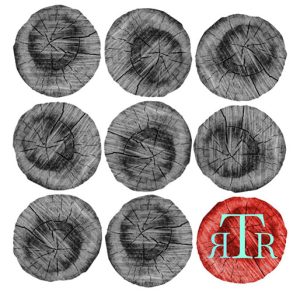Fairy Tale Review – 2007
Volume 3
2007
Annual
Cara Blue Adams
An ornate frame graces the cover of the Fairy Tale Review, now in its third issue. Inside the frame, a stark grey-and-white etched oval that opens a space in the violet background where a cloaked woman embraces a cloaked child. Both rise from the supine body of a menacing creature – a wolf? – who lies on his back as if dead, but whose open eyes and waving limbs suggest otherwise. “Violet,” editor Kate Bernheimer writes, can be misread as “violent,” and, as the cover image and this mistake-in-waiting suggest, fairy tales traffic in this tension.
An ornate frame graces the cover of the Fairy Tale Review, now in its third issue. Inside the frame, a stark grey-and-white etched oval that opens a space in the violet background where a cloaked woman embraces a cloaked child. Both rise from the supine body of a menacing creature – a wolf? – who lies on his back as if dead, but whose open eyes and waving limbs suggest otherwise. “Violet,” editor Kate Bernheimer writes, can be misread as “violent,” and, as the cover image and this mistake-in-waiting suggest, fairy tales traffic in this tension.
Kim Addonizio’s poem “Snow White: The Huntsman’s Story” re-tells the familiar tale from the huntsman’s perspective. Ordered to kill Snow White, he does, he tells us, though we might want to believe otherwise: “Think what you like: / that I spared her, that she sang / while keeping house for seven little men.”
Other works approach the fairy tale theme, and the idea of violence, more obliquely. Aurelie Sheehan’s story “Small Animal” manages to make archetypal elements – a house in the woods, a stranger with a mysterious bundle – fully contemporary by introducing the material of our modern world, including the Hawaiian shirts of Trader Joe’s, where the main character, a poet named Sara, works. When the bundle is unwrapped, what Sara finds is both symbolic and psychological. Looking at what is revealed, we are told, “It was as if someone had shown her ugly pictures of herself, or as if she were not herself, had no real life of her own.”
Another treat is the excerpt from Irlanda, written by the Spanish writer Espido Freire and translated by Toshiya Kamei. The novel, published to much acclaim in Europe, begins with a restrained but resonant line that sets the story’s grave, honest tone: “Sagrario died in May after much suffering.”
The range of work in the Fairy Tale Review speaks both to the pervasive influence of fairy tale, and to Bernheimer’s broad-minded interpretation of what the intersection of fairy tale and contemporary writing might look like. Like the picture on the cover – “Born,” by artist Kiki Smith – what we find here is the stuff of dreams and myths, what we are born into and from, rendered in strikingly individual terms.
[www.fairytalereview.com]




